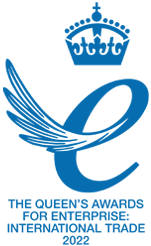High pressure die casting is a fast and precise method for creating aluminium or zinc components. It’s used by industries with specific requirements for appearance and dimensional tolerances, Here’s an overview of the process itself and a look at the pros and cons.
Process of High Pressure Die Casting
Manufacture of the mould: A hardened steel die is carefully machined to create a cavity in the shape of the final product, along with a running system to inject the molten metal.
Setting up the die: The die is mounted on a die casting machine (DCM) and pre-heated. The larger the production run the more economic the process as some set up processes can take time.
Melting the Metal: The alloy used for the part is melted in an electric or gas-powered furnace until it becomes liquid.
Injecting the Metal: The molten alloy is then injected into the die at high pressure. This high pressure ensures complete cavity filling and accurate mould replication.
Cooling the Metal: The molten metal cools rapidly and solidifies into the mould’s shape with additional pressure to compensate for contraction.
Ejection: The two halves of the die are separated, and the finished part is ejected using pins or ejector plates. Further finishing processes may be needed.
Recycling: Excess material is trimmed and recycled for the next production cycle.
Pros of High Pressure Die Casting
Fast and Cost-Effective Production: HPDC is an efficient process. It can produce large quantities of parts in a short time frame, often making it the most cost-effective option for high-volume production runs. The speed and precision of casting cycles ensure reduced waste, increased efficiency, and ultimately lower cost per unit over time.
Thin-Walled Components: The high pressure involved in this process allows for casting of extremely thin-walled components - as thin as 1mm. This feature is beneficial for creating lightweight parts that still maintain high strength and durability. Industries such as aerospace, automotive, and electronics benefit from this feature as they often require light, robust parts.
Smooth Surface Finish: HPDC produces components with smooth surfaces that are ideal for applying coatings or additional finishes. This reduces the need for secondary machining processes, saving time and money. It also contributes to the aesthetic appeal of the finished product, which is particularly beneficial for consumer goods.
Cons of High Pressure Die Casting
Porosity Issues: One common problem associated with HPDC is porosity - the formation of tiny holes or voids in the cast part due to trapped gas. Porosity can weaken the mechanical properties of the cast, limit its lifespan, and compromise its appearance. While careful design and process control can minimise this issue, it cannot be eliminated completely.
Limited Heat Treatment: The porosity caused in HPDC also restricts the ability to fully heat-treat components post-casting. Heat treatment, often employed to increase the strength and durability of metal parts, may not be uniformly effective due to the presence of porous areas.
High Start-up Costs: HPDC involves significant initial costs, particularly for tooling and setup. These costs can be limiting for small-scale production or prototyping. However, these costs are often offset over time in high-volume production runs due to the lower unit costs.
Why choose MRT Castings?
If high pressure die casting suits your application, consider MRT Castings for reliable component production.
We offer:
Machines with locking forces between 220 and 530 tonnes, providing flexibility in size and weight.
Computerised shot control, automatic ladling, die-spray, casting extraction, and cooling for enhanced repeatability and productivity.
Accessibility for small quantities: Our optimised tooling preparation and setup operations cater to customers requiring small runs.
Choose MRT Castings as your trusted partner for high-quality, precision high pressure die casting, whatever your order size.
If you need help to choose a casting process, or you’d like to discuss the next steps, contact our team today.









